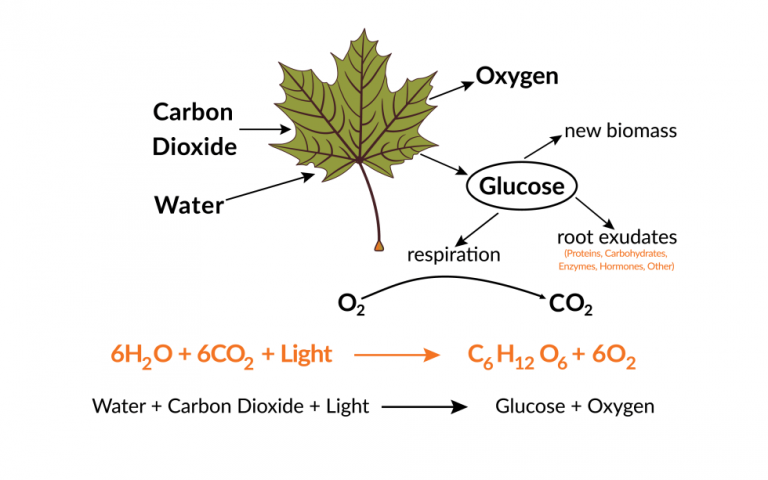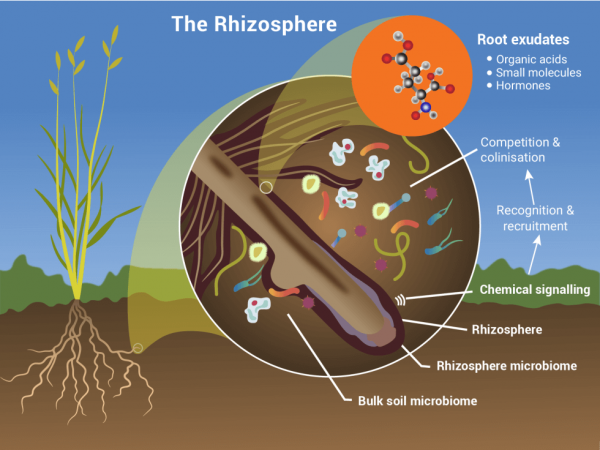- +27 (0)21 848 9434
- marketing@ecosoil.co.za
- Mon - Fri: 8:00 - 16:30
MICROBIAL BRIDGE
The carbon cycle has 3 phases – a gas, a liquid and a solid. Plants transform carbon gas into a liquid or a solid form in a process called photosynthesis. Light energy is converted into biochemical energy by utilising carbon dioxide (CO2) and water to synthesize carbohydrate molecules, such as sugars and in the process release oxygen.
PHOTOSYNTHESIS

These dissolved sugars are also called “liquid carbon”. Some of these carbohydrate molecules are utilised in the formation of plant structures like leaves or roots but between 30% and 40% are excreted through the roots into the soil to feed the micro-organisms.
Soil organisms act as the bridge between the plant and the soil and can be regarded as the regulator of the soil building and plant feeding processes. Healthy soils contain about 8 to 15 tons of bacteria, fungi, protozoa, nematodes, earthworms, and arthropods per hectare. Carbon is the currency for most transactions within and between living things.
Each plant species communicates with soil microbes by exuding a unique blend of sugars, proteins, enzymes, hormones and other biological compounds, many of which act as signals to plant microbes instructing them what their requirements are.
Exudates from living roots are the most energy-rich of the carbon sources found in the soil. This attracts a huge diversity of beneficial microbes that form a protective shield around plant roots, called the rhizosphere.

They protect plants against pathogens, increase the availability of minerals and produce organic compounds that plants utilise for growth, health and vitality. Microbial activity also drives the process of aggregation, enhancing soil structure, aeration, water infiltration and water-holding capacity.
The greater the diversity of plants, the greater the diversity of microbes and the more robust the soil ecosystem. It is the diversity in microorganisms that makes it possible for natural systems to be so functional and healthy compared to the sterile, lifeless and thwarted systems offered by monoculture with their limited microbial diversity.
Somewhere between 85% and 90% of the nutrients plants require for healthy growth, are acquired via carbon exchange, in other words, where plant root exudates provide energy to microbes in order to obtain minerals and trace elements otherwise unavailable. So, in effect plants pay a 30% to 40% carbon tax for services rendered by soil organisms and in return get 85% to 90% of their nutrients. Not a bad deal!
